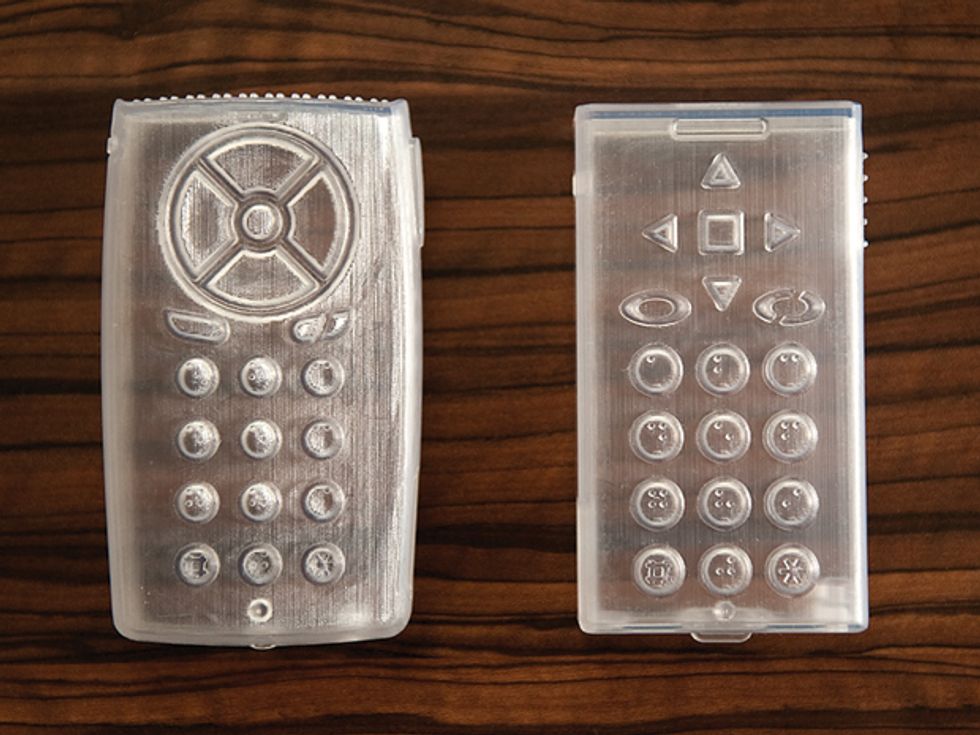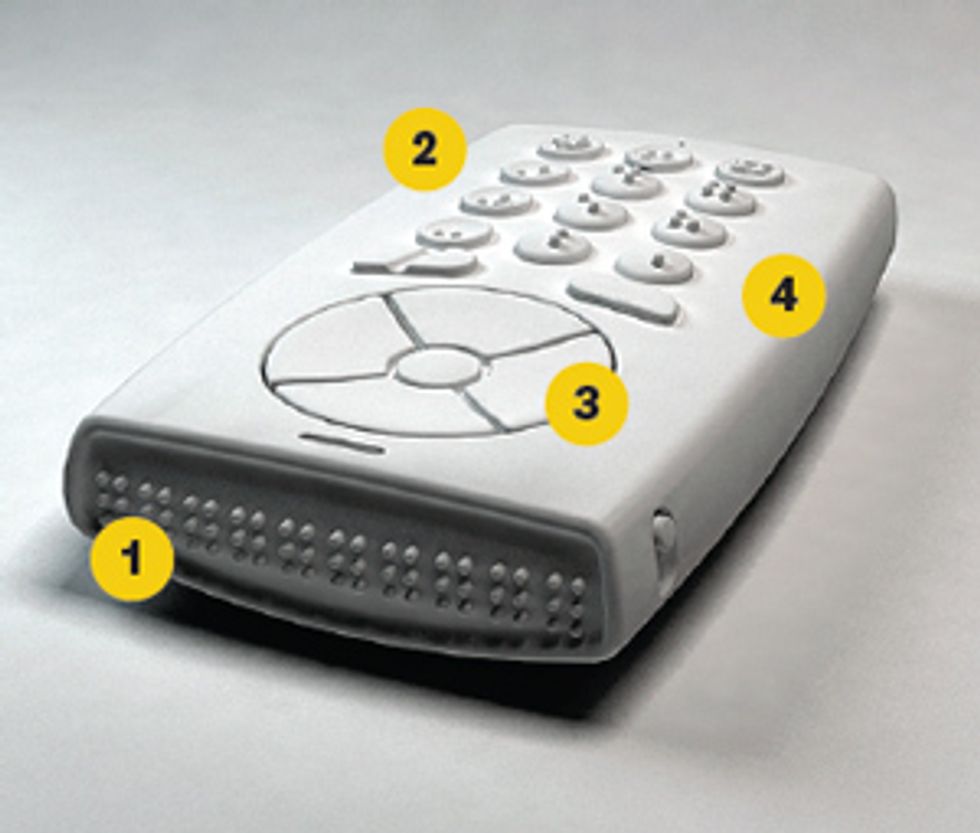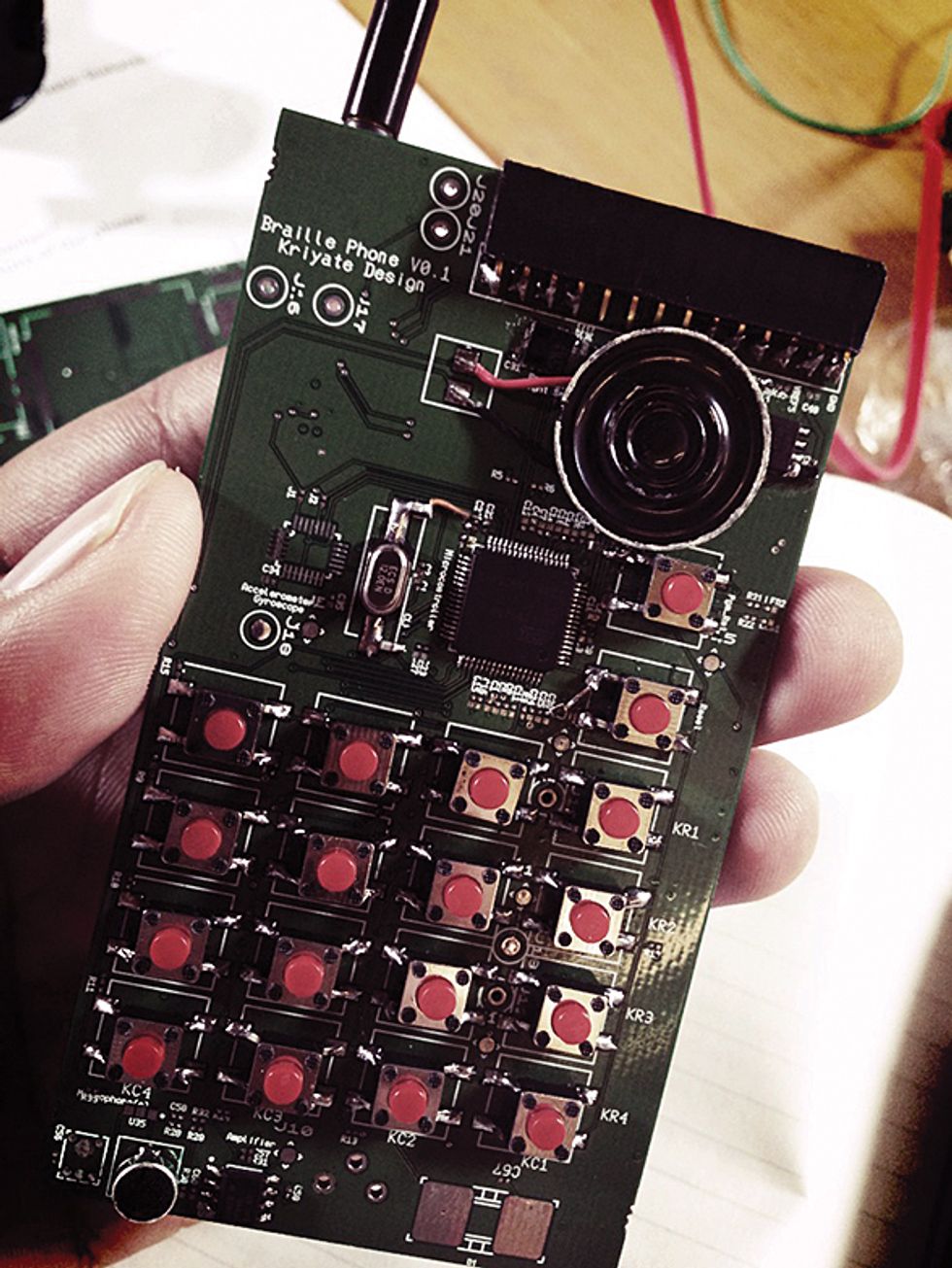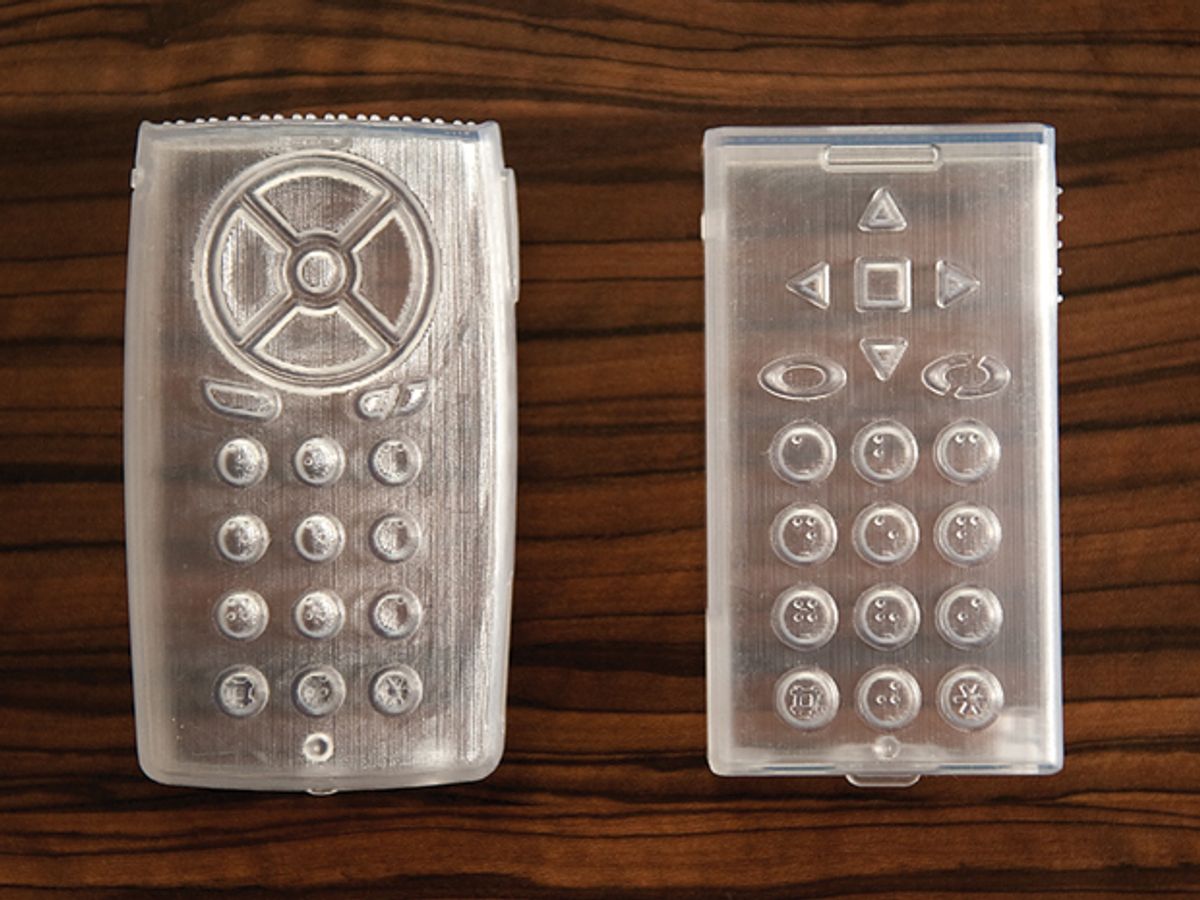
Around the world, 285 million people are blind or visually impaired; over a fifth of them, or nearly 63 million, live in India. Entrepreneur Sumit Dagar wants to be their Alexander Graham Bell: Sometime in the next 12 months he’ll be rolling out the world’s first braille cellphone. His company, Kriyate, has drawn up the first prototype, pictured here. Dagar says that test users found it difficult to imagine dynamic braille on such a small device. “But once they comprehend it, the joy is so immense. That’s what makes us most happy.” On the drawing board are plans for an even more advanced phone with a camera that can translate text to braille and images to raised relief figures on the device’s “display.”

1. The phone can present up to 10 braille characters at a time. Many visually impaired users in developed countries enjoy access to smartphones via voice-based systems such as Apple’s VoiceOver. But in India, regional dialects and accents can make Western screen readers nearly useless, and braille remains the standard for accessibility for much of the developing world’s blind population.
2. The numerical keypad has braille markings for each of the numbers. Users can enter braille letters, which are formed from a three-by-two grid, by pressing six keys on the keypad in the shape of each letter.

3. A simple and uncluttered design is especially significant for this phone’s users, Dagar says. “It has bigger buttons and more reference lines,” he says, and “a bigger volume rocker on the side that makes it easier to identify.”
4. The first-generation braille phone will have some typical smartphone features such as a music player, an e-mail client, a calendar, and even GPS navigation. But because the CPU has to power only a 10-character display, it doesn’t need to be a typical smartphone CPU, keeping the (yet to be announced) price low. “Anybody who can afford a phone can afford this phone,” Dagar says.
